Orbs and bubbles are often associated with notions of playfulness, lightness, and a sense of wonder. They evoke childhood memories of carefree moments, inviting curiosity and engagement. In public art installations, these shapes can symbolize unity, connection, and the ephemeral nature of life. The spherical forms can reflect light and color, creating dynamic visual experiences that change with the viewer’s perspective. These installations invite touch and movement, reinforcing themes of interaction and community.
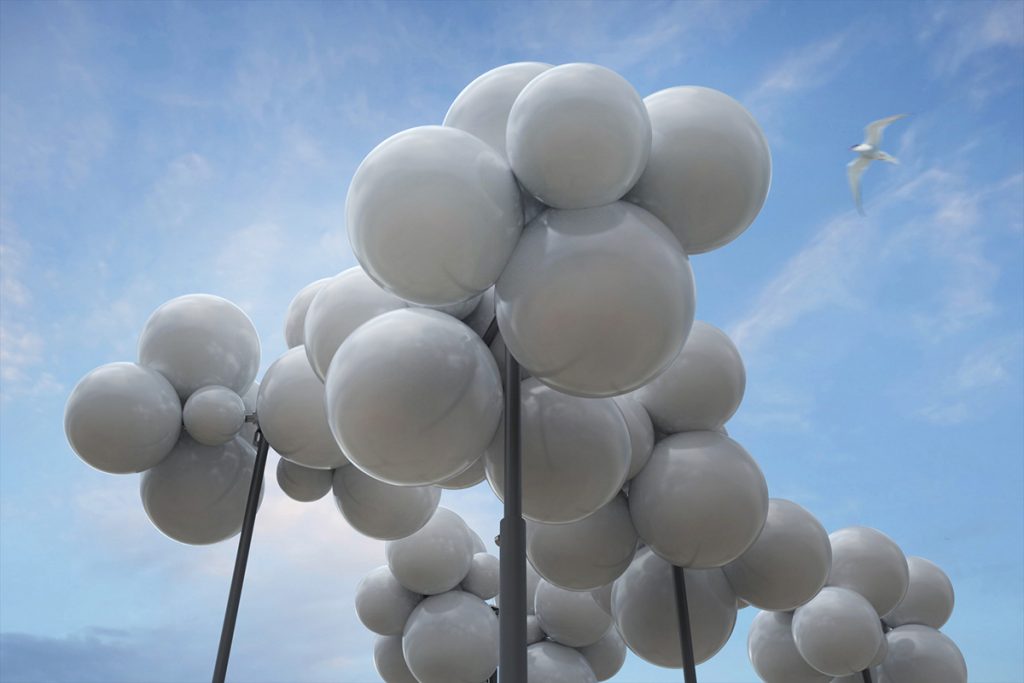
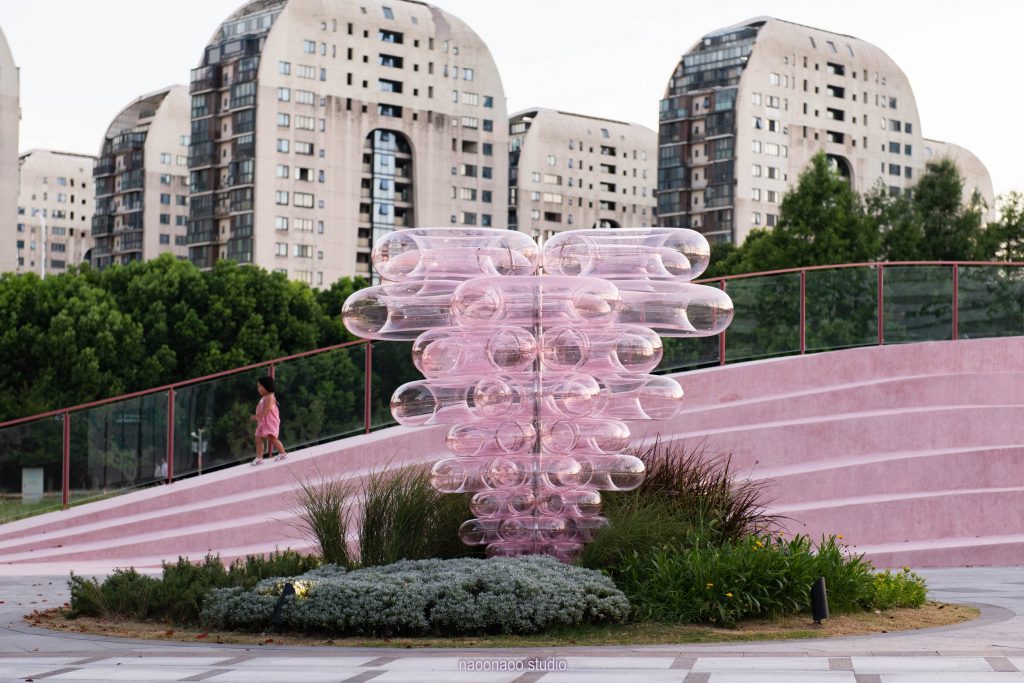
Barbie Mountain by Naoonaoo
In Barbie Mountain, a public installation by local architecture and art studio Naoonaoo, bubbles symbolize a sense of whimsy and imagination, inviting visitors to engage with their surroundings in a playful manner. This installation located in Suzhou’s Huqiu District aims to revitalize a once outdated commercial area, seamlessly blending art and architecture to enhance the urban landscape.
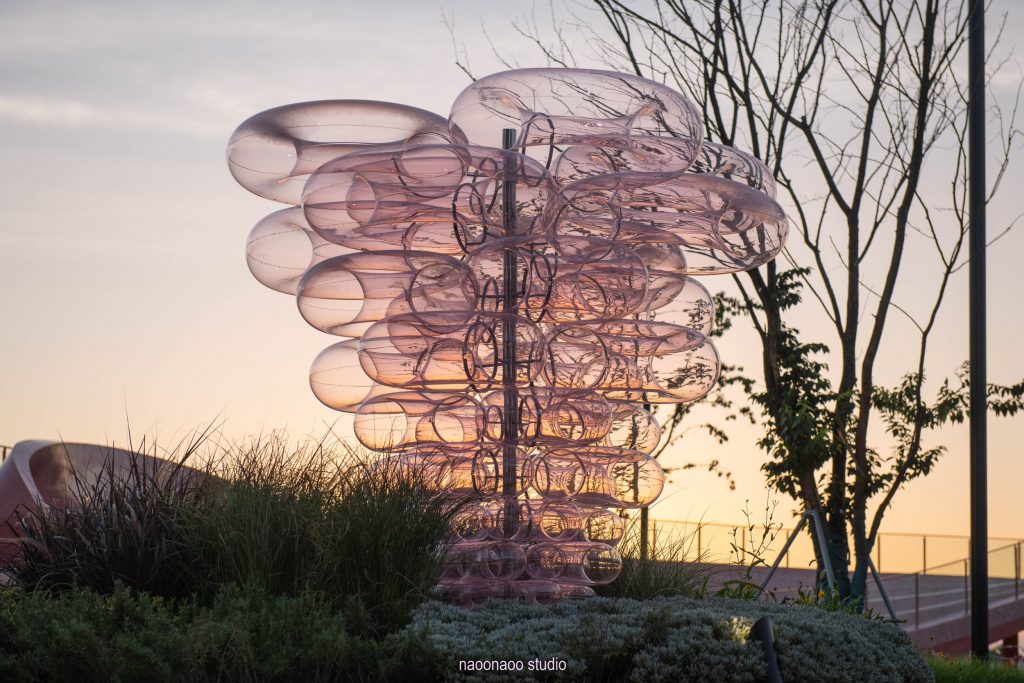
Barbie Mountain by Naoonaoo
Featuring 40 pink acrylic bubbles, the installation draws inspiration from Suzhou’s traditional Taihushi rockeries and stone pagodas, reinterpreting these historical forms through five types of prefabricated acrylic modules. Supported by a central steel spine, the undulating landscape creates a harmonious interaction with the waterfront, lush greenery, and surrounding community buildings.
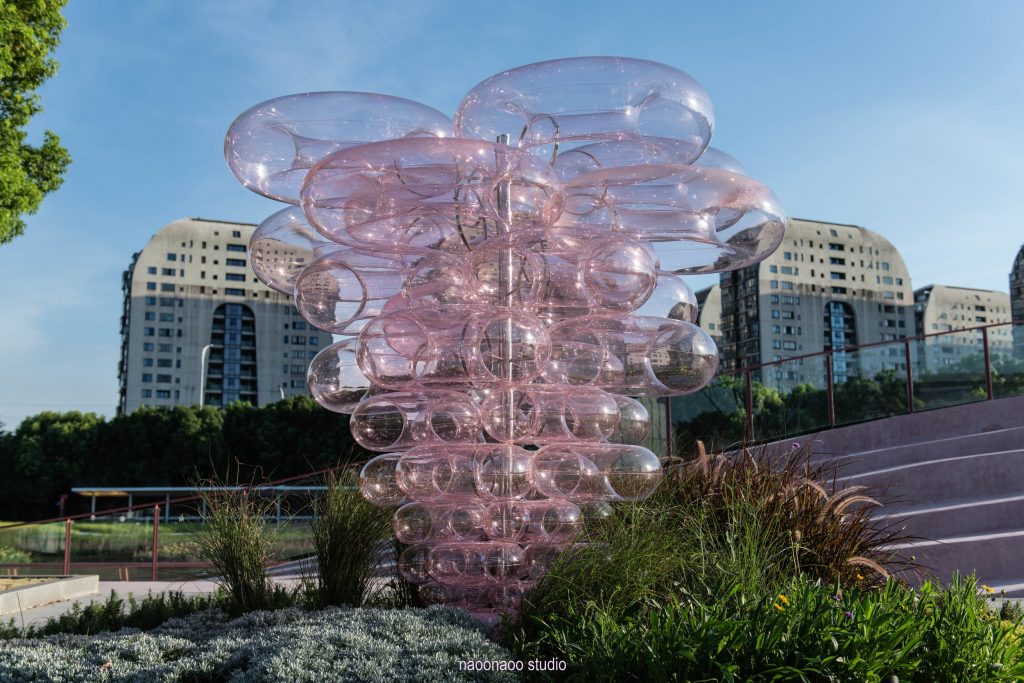
Barbie Mountain by Naoonaoo
Barbie Mountain seeks to capture the tranquility and poetry of the area, reflecting the serene beauty of Suzhou while encouraging exploration and play. By transforming the once-gray stones of Taihushi into vibrant, contemporary shapes, the installation resonates with the city’s dynamic evolution, merging traditional aesthetics with modern creativity. This project not only beautifies the space but also invites the community to engage with their environment in new and imaginative ways.
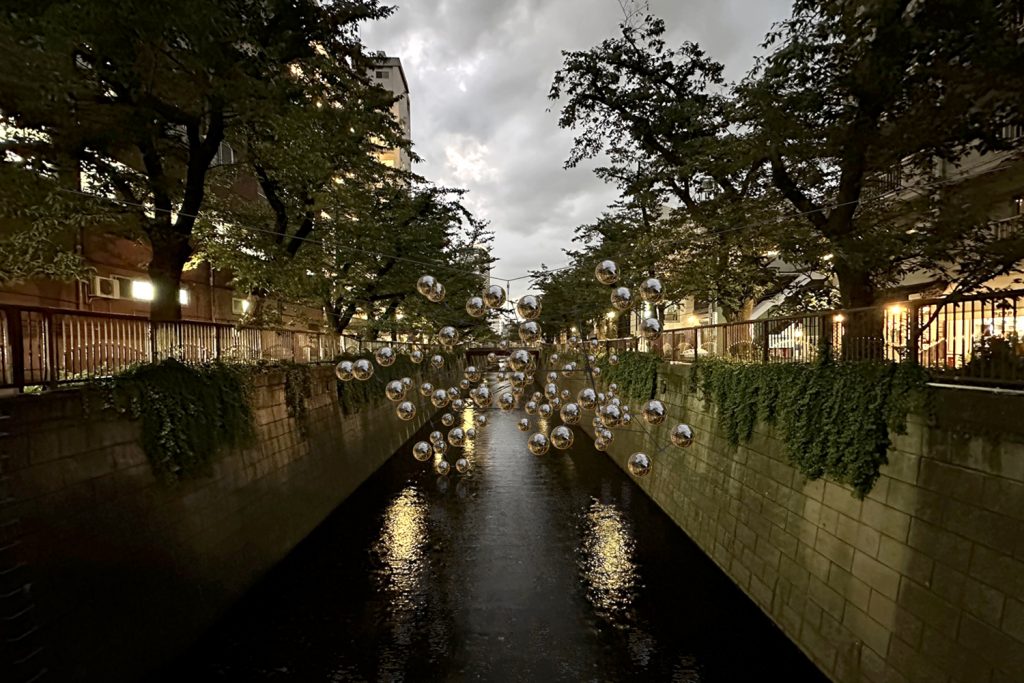
Floating Orbs by Vincent Leroy
The theme of transformation and interaction is beautifully explored in Floating Orbs by French artist Vincent Leroy, where the installation invites viewers to engage with both the natural and urban environments. Positioned above the Nakameguro Canal in Tokyo, these mesmerizing spheres symbolize a celestial dance, seamlessly blending art with the surrounding landscape.
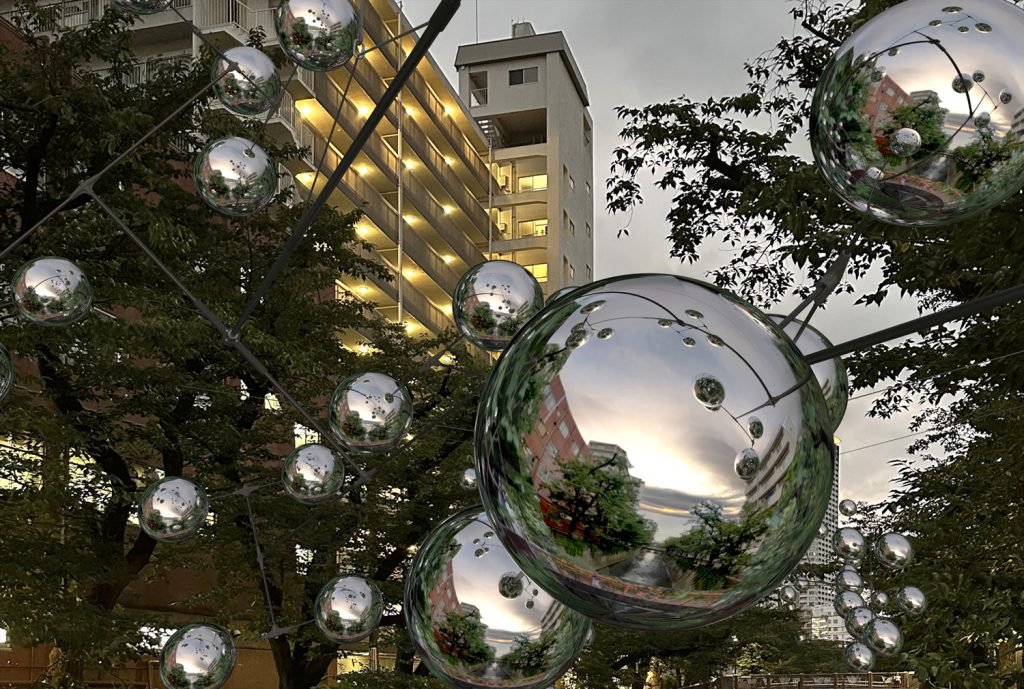
Floating Orbs by Vincent Leroy
Crafted from carbon rods, 3D-printed components, and mirrored surfaces, the orbs create a dynamic interplay between light, reflection, and motion. As they sway gently in response to the air, their balanced structure enhances the canal’s tranquility while introducing an otherworldly presence to the bustling urban setting. The shifting reflections offer a continuously evolving spectacle, capturing the essence of the city and transforming it into a moving canvas.
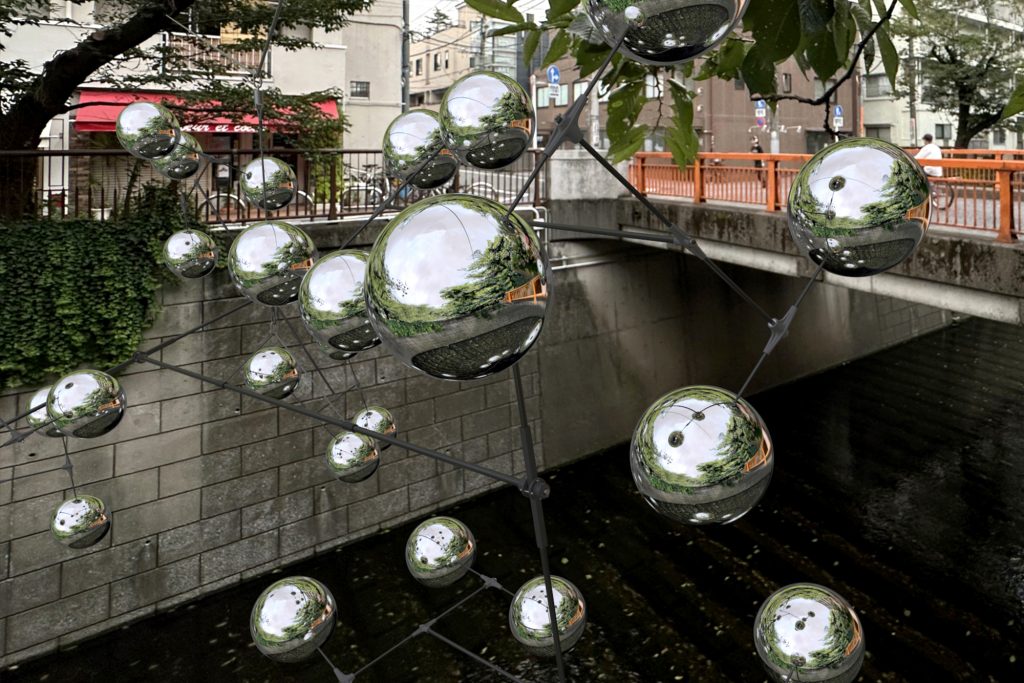
Floating Orbs by Vincent Leroy
As dusk falls, the orbs capture the fading sunlight, creating a dreamlike ambiance that contrasts with Tokyo’s vibrant energy. At night, the installation comes alive with reflections of city lights, offering a serene moment of stillness that invites contemplation amidst the urban rhythm. Ultimately, Floating Orbs embodies the beauty of transient moments, encouraging a deeper connection between art, nature, and the human experience.
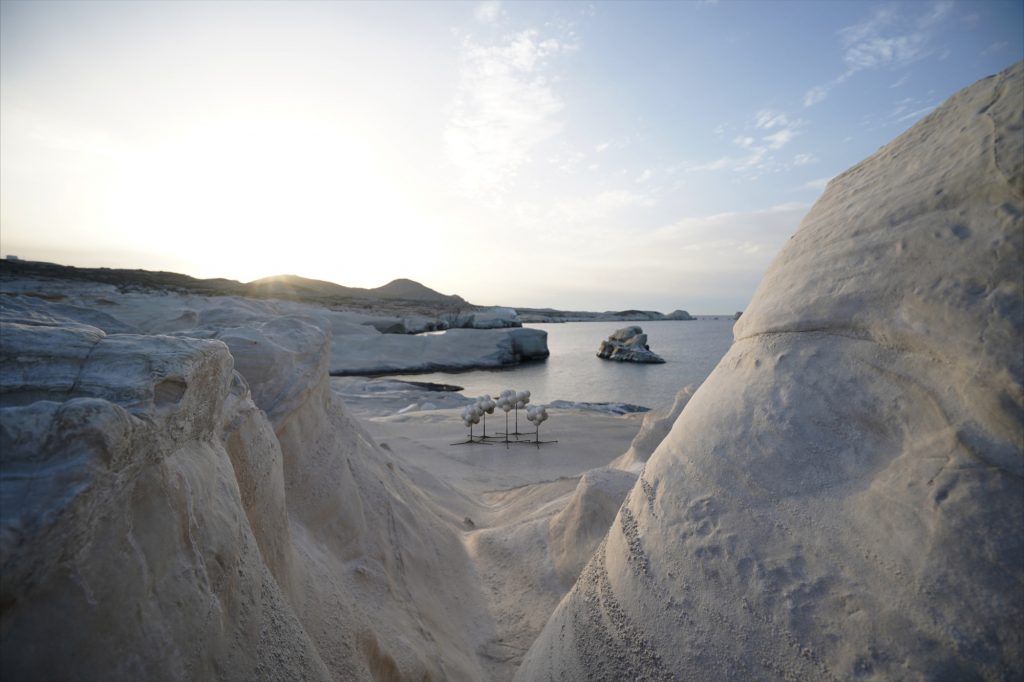
Molecular Cloud by Vincent Leroy (also header image)
Leroy’s other installation, Molecular Cloud, the installation symbolizes a dreamlike interplay between nature and art, evoking a sense of wonder and contemplation. Inspired by the cliffs of Milos Island, Greece, it harmonizes with the lunar landscape of Sarakiniko Beach.
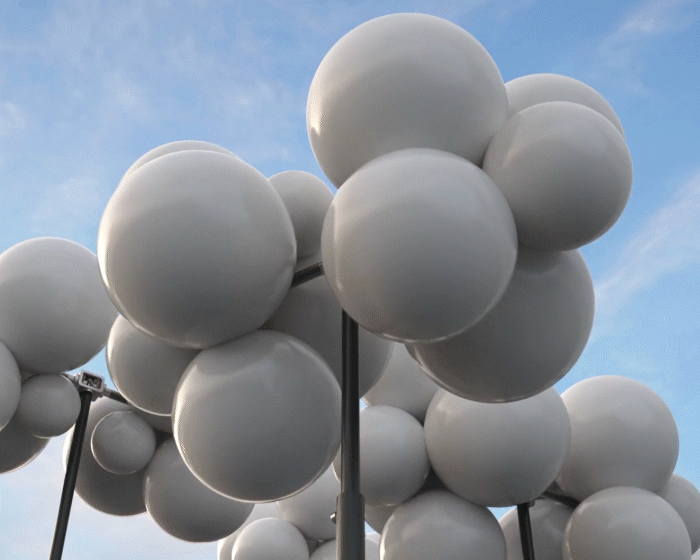
Molecular Cloud by Vincent Leroy
Composed of spheres in various sizes, the installation’s mobiles blend seamlessly with their surroundings, reflecting the ever-changing colors of the sky—shades of blue, purple, and orange. Depending on the viewer’s angle, the white orbs appear to float weightlessly or merge with the rocky terrain, creating a mesmerizing visual experience reminiscent of a drifting cloud. The organic shapes echo the natural rock formations sculpted by wind and sea, navigating the delicate boundary between the artificial and the natural.
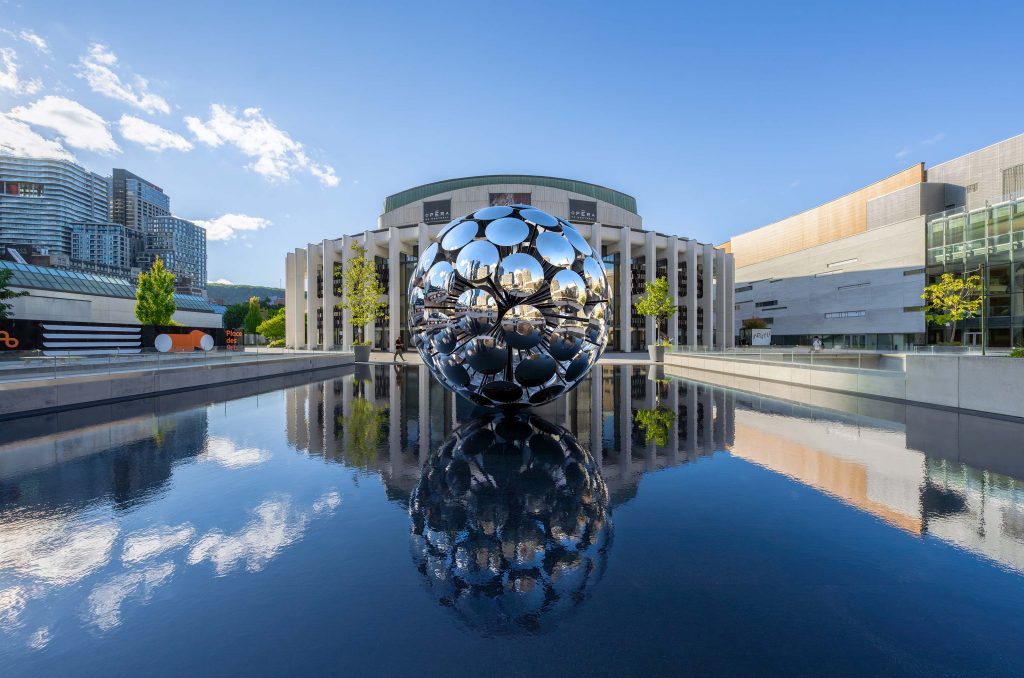
ORB by SpY
The theme of transformation and urban interaction resonates powerfully in ORB, a sculpture by Madrid-based artist SpY that elevates the ordinary into the extraordinary. Initially envisioned to complement the grandeur of the pyramids of Giza, ORB seeks to establish a harmonious dialogue with monumental historical environments. Its subsequent installation at Montreal’s Place des Arts further emphasizes its universal appeal, connecting it to a culturally rich and socially significant locale.
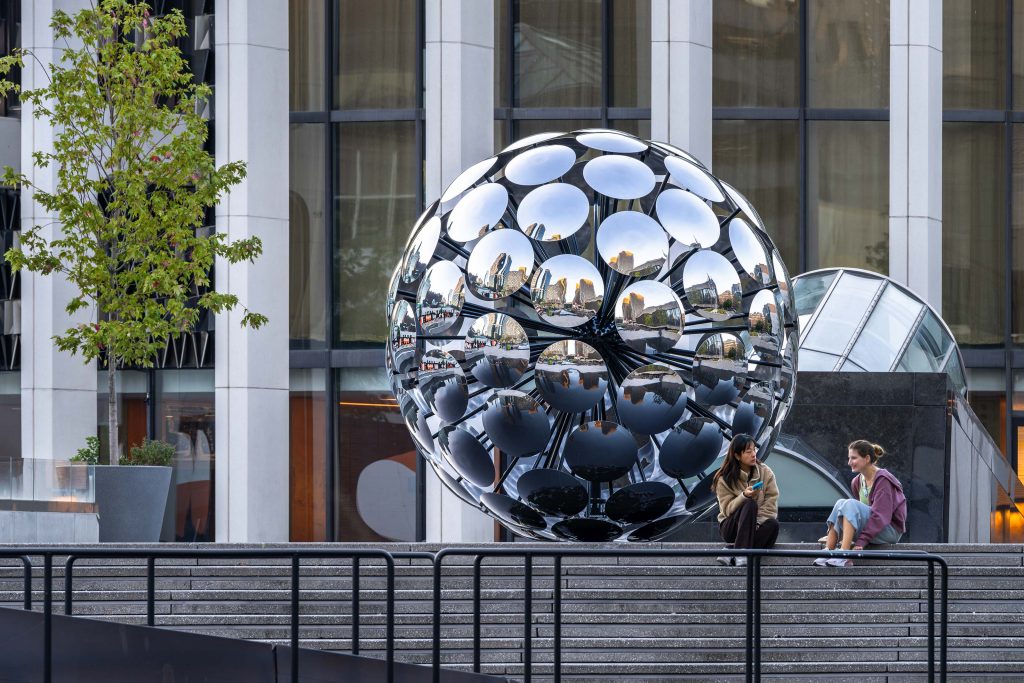
ORB by SpY
At its core, ORB reinterprets the familiar convex traffic mirror—an everyday object often overlooked in urban settings. By multiplying and arranging these mirrors into a striking spherical pattern, SpY transforms a mundane component into a captivating work of art. This playful yet profound approach challenges viewers to reconsider their surroundings, inviting them to engage with the familiar in new and unexpected ways.
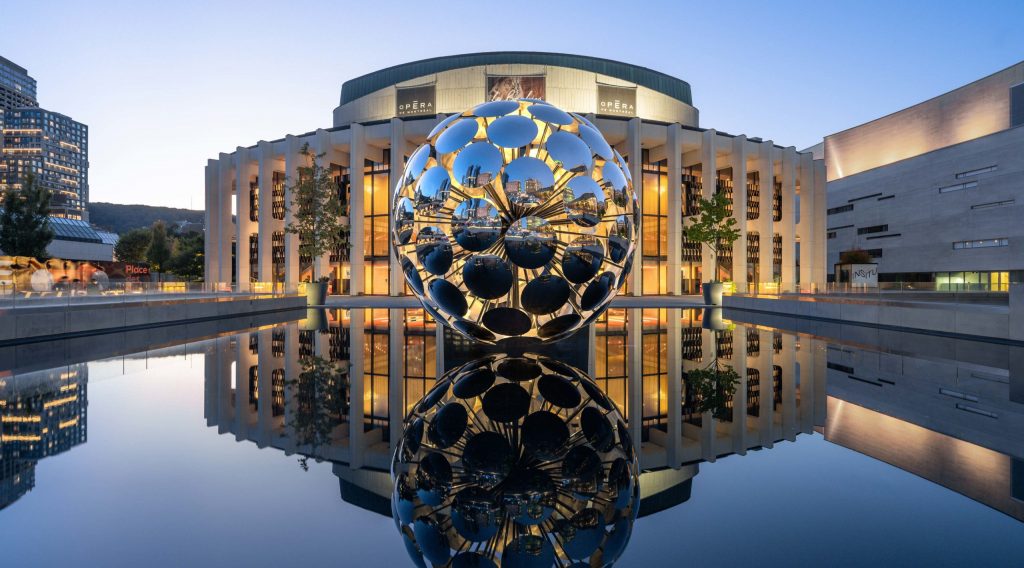
ORB by SpY
The mirrored surface of ORB plays a crucial role in its impact, reflecting fragments of the environment and the observers themselves. As the day unfolds, the sculpture captures changing light and movement, creating a dynamic experience that evolves throughout the hours. This interaction invites viewers to reflect on their relationship with the urban space and its inhabitants, encouraging a dialogue that transcends the boundaries of art.
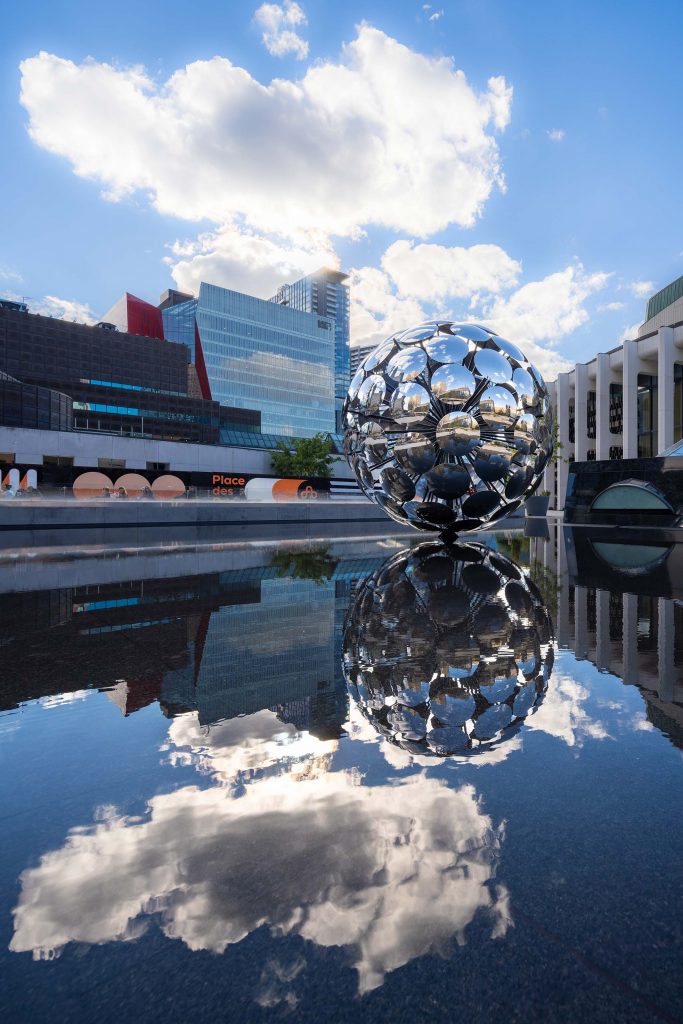
ORB by SpY
Through ORB, SpY highlights the interconnectedness of art, environment, and community. The installation becomes a mirror—not just literally, but symbolically—reflecting the diversity and vibrancy of urban life. It prompts contemplation on how we perceive and interact with our surroundings, reminding us that even the most ordinary elements can hold profound significance when viewed through an artistic lens. ORB stands as a testament to the power of art to transform, engage, and inspire in the heart of the city.